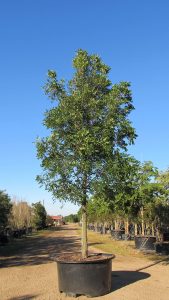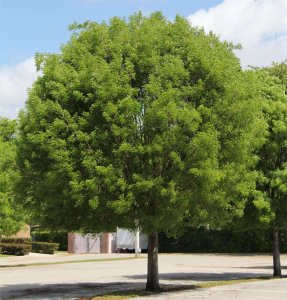Mahogany trees are one of the most popular trees, not only for their use in landscape! The term mahogany has multiple meanings; it apparently originates from the West Indies. Mostly because of the wood, of a native tree with straight grain, moderate density, durable, resistant to rot, with a warm reddish-brown color and easy to work. Furthermore, Mahogany wood is popular for making furniture, paneling, boats, musical instruments and so on. Additionally, Mahogany bark extracts and gum have medicinal use and bark tannin is perfect for coloring leather, giving it a rich mahogany red hue.
Mahogany Trees Characteristics and Classification
Scientifically, genuine mahogany trees are classified in the Mahogany plant family, under the genus Swietenia. And they are three mahogany species: West Indian (S. mahagoni), Honduran (S. macrophylla) and Pacific Coast (S. humilis). Although, Mahogany trees in the wild readily hybridize, and often making precise identification of a specimen difficult. Some suggest that there may be indeed only a single quite of variable species (macrophylla), but this theory still lacks research, reason why it is not accurate to state so.
As sources of genuine mahogany, the Americas have run out, mainly because two events took place. First, genuine mahogany plantations principally located in Asia, are mainly to supply markets for the wood. Second, the identification of six other tree genera in the Mahogany family which have similar characteristics and its harvested in the wild. As a result, this has a big impact on other mahoganies specially concerning timber trade, because they refer to it as true mahoganies. With origins, such as: African, Chinese, Indian, Indonesian, New Zealand and Philippine. Consequently the trees providing these alternate sources of mahogany wood have no role in landscaping.
The Use of the Mahogany Tree in Landscaping
West Indian and Honduran mahogany are both qualify as ornamentals; but the West Indian species is more popular for landscaping. Mainly because it is smaller in stature, often 30-40 feet tall; whereas Honduran mahogany has a potential mature height of over 100 feet.
Natural Distribution
West Indian Mahogany has a natural distribution which includes South Florida, the Bahamas and the Caribbean. Wild mahogany populations in Florida are threatened. West Indian Mahogany is a popular ornamental foliage tree with applications as a light shade tree under which grass will grow, as a screen, in parking lot islands and along streets. Besides The tree is resistant to wind and can be pruned to maintain size and shape. Also, Mahogany is the national tree of the Dominican Republic and Belize.
Treeworld has available Swietenia mahagoni plants of five different sizes to satisfy landscaping needs.
In 2003, mahogany got listed on the CITES (Convention on Trade in Endangered Species) as a species needing strict regulation in an effort to prevent its extinction. As Peruvian mahogany trade violates CITES, its trade or processing is illegal under the U.S. Endangered Species Act. While the constantly rising demand for mahogany trees among the Americans and its trade is against the law, it also poses a serious threat to species such as Jaguar as they lose their habitat because of its relentless logging.
Mahogany trees grow: in the tropical moist deciduous forest and tropical rain forest in the West Indies, the west coast of Africa, southern Mexico, Central America, and South America. One can spot some mahogany trees in South Florida.
Mahogany trees in the landscape are used for shade and as street tree. Furthermore, they have a straight trunk, fine grain with no voids or pockets, making them ideal for fine furniture and cabinets. Their color darkens with time, and they possess excellent rot resistance and warm acoustic characteristics. Due to these properties, mahogany wood is used in drum shells, guitars, banjo necks, boats, and paneling.





